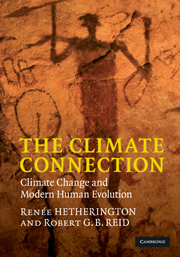Appendices: The biological background to the story of evolution
Published online by Cambridge University Press: 05 August 2012
Summary
Homo sapiens is the main evolutionary player in the text of this book. To biological evolutionists, however, evolutionary change in humans is minor. Adaptational features such as gracile bodies, alterations in sweat patterns and dark skin are connected to living and working in hot, sunny conditions. A tendency to lay down thick adipose tissues, and a stocky stature, are characteristic of humans living in Arctic conditions and the high plateaux of the Andes and Himalayas. These features, as well as those associated with humans living in less stressful conditions, are also correlated with human physiological, developmental, behavioural and social variations, as we have demonstrated in the main text.
Although all of the ‘serious’ evolution of living organisms (usually seen as major anatomical changes) occurred before the emergence of Homo sapiens, the appearance of the new species is itself of great interest. Moreover, to return to adaptational changes in our species, it is important to note that they reinforce physiological aspects of homeostasis, the dynamic state of equilibrium that evolved over 500,000 years, providing major improvements in adaptability. Therefore it is vital to understand the evolution of adaptability, as well as to know what humans have made of it, the latter being strongly featured in the body of this work. Anthropological and psychological treatments of human evolution usually neglect the important aspects of evolution in general, or simply refer in passing to natural selection as the one true cause of evolution. Our Appendices therefore provide the big evolutionary picture.
- Type
- Chapter
- Information
- The Climate ConnectionClimate Change and Modern Human Evolution, pp. 303 - 304Publisher: Cambridge University PressPrint publication year: 2010



